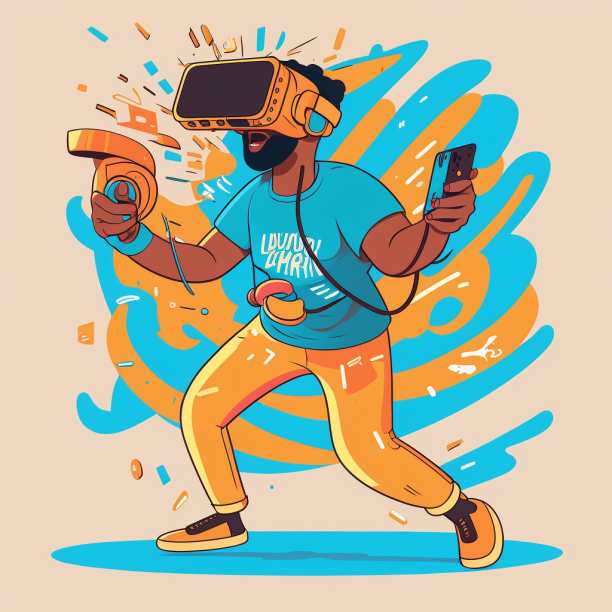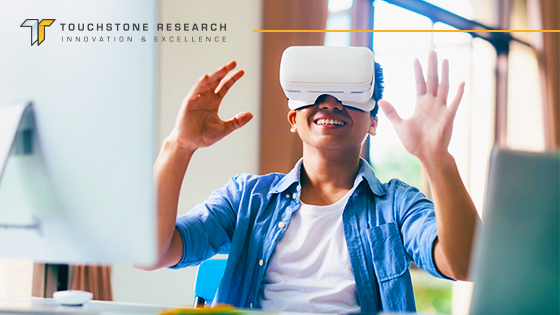
As the VR landscape continues to widen for both functional and recreational use cases, understanding user experience in VR is growing increasingly vital. Using a VR headset, while becoming more widespread, is still a new experience for many consumers, making first impressions and experiences critical in determining user trajectory for VR apps and devices. The pool of VR headset owners is relatively small, making in-person research with a diverse group of active VR users a challenge – so why not take sessions online? Remote in-headset usability testing is highly effective at revealing key UX insights efficiently, and it’s not as complicated as it seems.
Click here to learn more about TSR’s expertise recruiting niche audiences for Qualitative Research.
What does usability testing in-headset look like?
Setting up in-headset sessions that allow the moderator to see what participants experience in VR requires participants to join a moderator via video conference, not unlike typical remote sessions. The moderator then guides participants in casting their VR headset to a computer or mobile device – this projects what the participant is seeing in VR onto their device’s screen. Via screenshare, the moderator can now have a direct view of what the participant is seeing in VR, as do observers joining the interview. Often, the moderator or another research participant may join the participant in VR as well (depending on the experience being tested).

Unique Benefits of Remote VR Research
Step into Your Participant’s World
For moderators who have the privilege of joining participants in VR, remote research is transformed to allow for a moderator to be in the same setting as their respondent during a session. The process of building rapport and connection at the start of sessions is more in-line with in-person experiences and allows for deeper understanding of the participant’s experience and richer insights. Moderators are able to experience VR with participants and observe exactly what they are describing as it occurs.
Things to Consider When Planning In-Headset Sessions
Tech Setup & Troubleshooting
Be prepared for tech issues, especially if testing new or unreleased VR content. While many VR headset owners tend to be early adopters of new technology, it should never be assumed that they are VR/technology “experts” in any way. Moderators and other researchers participating in sessions should fully test all tech setup prior to sessions, including the apps or experiences respondents will be viewing. A buffer of at least 15 minutes should be built into all sessions to account for casting setup, any troubleshooting/loading time in headset, and time to reboot if needed.
Privacy
Many spaces in VR are public, and conducting research in these spaces is not unlike conducting research in physical public spaces. Researchers need to be mindful that they are not causing a disruption or recording non-participants without their knowledge or consent. Special considerations need to be made for how and when sessions will be recorded.
Is Casting Permitted?
Depending on what participants will be exploring in VR, researchers should also be sure to try casting ahead of time to ensure the VR content/app being tested is able to be casted. On rare occasions, VR content may be blocked from casting due to the proprietary or copyright nature, and it is important to verify this prior to starting research.
Touchstone Expertise
Touchstone Research, an award-winning research firm with an in-house team of skilled moderators, has been conducting VR in-headset remote sessions with teens and adults for 3+ years, including in-depth interviews and dyads.
Touchstone was the first research company to conduct research on the next gen wave of VR technology and headsets with Kids & Teens in the U.S., and conducted the first ever VR Consumer Sentiment Report (in conjunction with Greenlight VR). The first-of-its kind report surveyed over 2000 consumers age 10 through 65 on their awareness, attitudes, perceptions, and purchase intent of VR platforms and headsets. Data from Touchstone VR Consumer Insights reports have been published over 100 times including features in the world’s largest media and technology publications.
Click here to learn more about Touchstone VR.